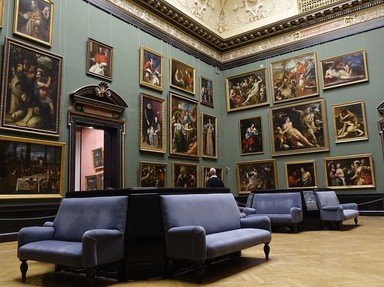Quiz Answer Key and Fun Facts
1. The Prado boasts several triptychs by this Flemish painter including "The Garden of Earthly Delights" and "The Adoration of the Magi".
2. The nightmarish "Saturn Devouring His Son" is the best known of the "Black Paintings" by this Spanish artist.
3. Side by side in the Prado hang two large paintings by Francisco Goya: "The Second of May 1808" and "The Third of May 1808". They represent Spanish resistance to the occupation of Madrid by whose armies?
4. The 15th century panel "The Descent from the Cross" is considered the pinnacle of Flemish painter Rogier van der Weyden's career. In this vivid, emotional scene, the lifeless body of Christ is contrasted to what other image?
5. The Prado collection includes almost 50 paintings by the Sevillian portrait artist Diego Velázquez. His best known work, "Las Meninas" depicts the family of which monarch?
6. One of the largest collections of Peter Paul Rubens' paintings in the world is owned by the Prado. The most famous of these pieces, dated to 1635, shows a number of young women representing figures in Greek mythology. What is it called?
7. Displayed at the Prado are a number of paintings by this master of the Spanish Golden Age, nicknamed "Lo Spagnoletto". His biblical subjects include Isaac and Jacob, Lazarus, Mary Magdalene, and the apostles Philip and James.
8. Francisco Zurbarán's "Agnus Dei" stands out amongst the vast collection of religious artwork at the Prado. Whose image is depicted in this painting?
9. In 2012 the Prado announced that it had found a copy of which celebrated portrait, whose original hangs in The Louvre?
10. While the Prado is best known as a picture gallery, its collection also includes more than 900 sculptures. One of the most exquisite, Camillo Torreggiani's bust of a veiled Spanish monarch, superbly demonstrates the wet drapery technique. Who was his royal subject?
Source: Author
lorance79
This quiz was reviewed by FunTrivia editor
LadyCaitriona before going online.
Any errors found in FunTrivia content are routinely corrected through our feedback system.

